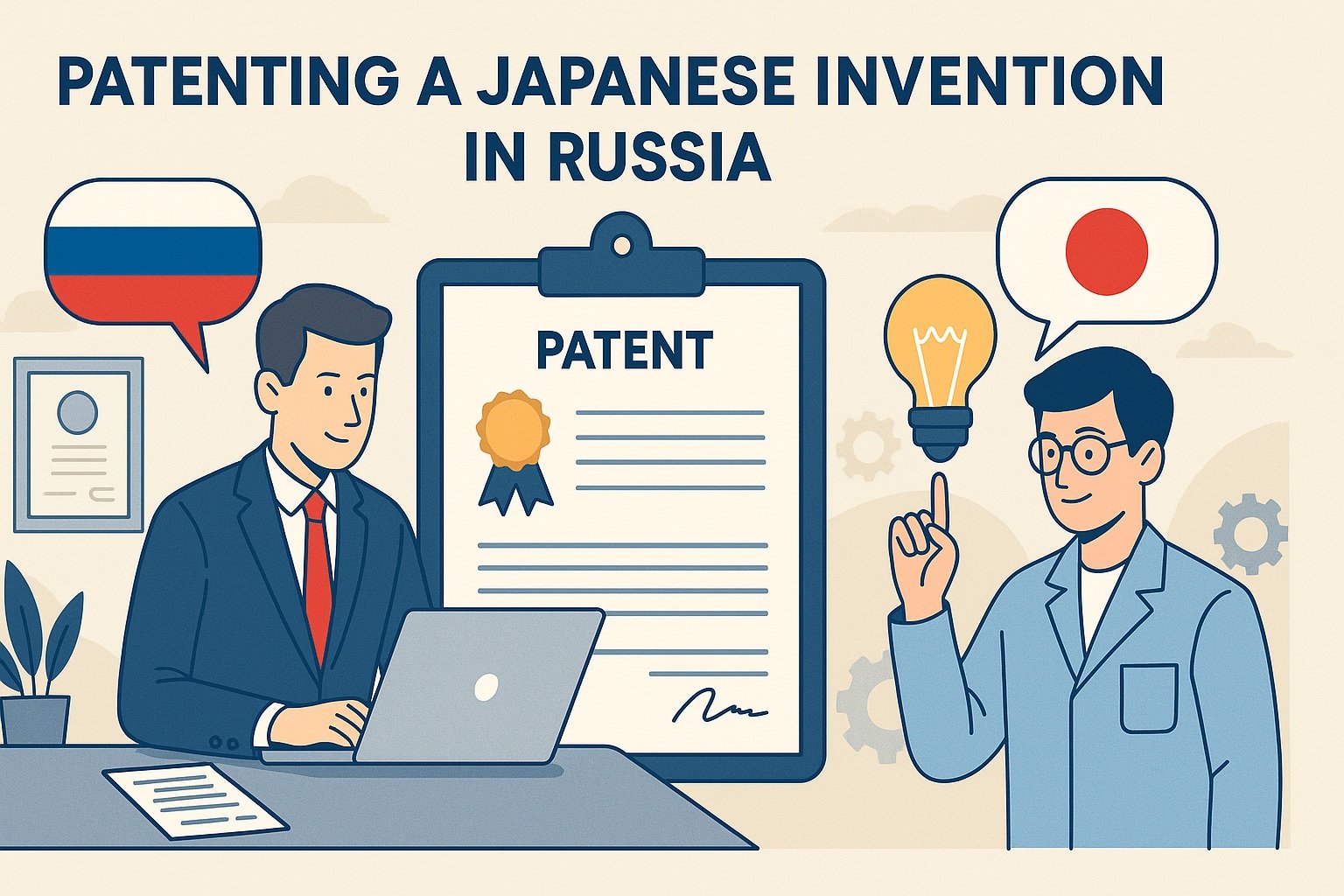Imagine you’re a Japanese inventor who’s developed a game-changing technology, say, a compact battery for electric vehicles that charges three times faster. Now, you want to protect your idea in Russia, where demand for energy innovations is soaring. Securing a patent in Russia isn’t just a bureaucratic step—it’s a strategic move that requires understanding the nuances. In this article, drawing from my experience advising Asian companies, I’ll break down the key requirements and deadlines to ensure you don’t waste time or money when patenting a Japanese Invention.
Why Should Japanese Inventors Patent in Russia?
Russia is not only a massive market but also a country with growing interest in Asian technologies. According to Rospatent data, patent applications from foreign applicants, particularly from Japan and China, surged by 15% in 2024. A Russian patent grants exclusive rights for 20 years, safeguarding against copycats and opening doors to licensing or partnerships with local giants like Rosatom or Gazprom.
Here’s the catch: Russia adheres to the Paris Convention, so you can claim priority if you act fast. Miss the deadlines, and your idea could slip into competitors’ hands.
Key Benefits for Japanese Inventors:
- Local Protection: Prevent imitations across the Eurasian Economic Union (EAEU).
- Cost-Effective: Filing starts at around 10,000 RUB, plus patent attorney fees.
- Global Strategy: A Russian patent strengthens your portfolio for international disputes.
Key Requirements for Japanese Invention: What Do You Need?
Rospatent, Russia’s Federal Service for Intellectual Property, is strict but fair. Your patent application must be complete to avoid rejection. For Japanese applicants, the focus is on accurate translations and compliance with Eurasian Patent Convention standards (if you opt for that route to simplify).
Step 1: Confirm Patentability
Your invention must be novel, involve an inventive step, and have industrial applicability. If you’ve already filed in Japan, use that application as a foundation—but ensure it meets Russian standards. For instance, AI software can qualify if it solves a technical problem, not just an algorithm.
Step 2: Gather Required Documents
Here’s what you need, based on Rospatent’s official guidelines:
| Document | Description | Notes for Japanese Applicants |
|---|---|---|
| Application Form | Details about the applicant and inventor. | Include your Japanese address; use transliteration. |
| Invention Description | Detailed explanation, including claims and drawings. | Translate to Russian; hire a certified translator. |
| Claims | Concise definition of protected features. | Ensure clarity, avoiding ambiguity. |
| Abstract | Brief summary (150–250 words). | Include keywords for searchability. |
| Priority Proof | Copy of the Japanese application with its filing date. | Provide the Japanese application number. |
Pro Tip: In 2023, a Tokyo-based client nearly lost priority due to a delayed translation. I recommend hiring a Russian patent attorney early—they charge around 50,000 RUB but streamline the process.
Don’t forget: for pharmaceutical or biotech inventions, include clinical trial data. For “green” technologies (like your battery), highlight environmental benefits to expedite examination.
Deadlines: Don’t Miss Your Window
Timing is critical. Under the Paris Convention, you have 12 months from your Japanese filing date to submit in Russia while claiming priority. The full process from filing to patent issuance takes 18–24 months. Here’s the breakdown:
- Priority Filing: Within 12 months of the Japanese filing. Miss it? You lose priority but can still file without it.
- Formal Examination: 1–2 months. Rospatent checks for completeness.
- Substantive Examination: 6–12 months. Novelty is assessed; pay extra (around 20,000 RUB) for expedited review.
- Patent Issuance: 2–3 months for registration and publication.
Timeline Visualization:
- Day 0: File with Japan Patent Office (JPO).
- Months 1–12: Prepare and file with Rospatent.
- Months 13–24: Examination process.
- Month 25: Patent granted!
If you’re in a rush (e.g., for a Moscow trade show), file a provisional application—it gives you 6 months to refine.
Heads-Up: Since 2025, Rospatent has shifted to digital filing via its portal, cutting timelines by 20%, but it requires an electronic signature. For foreigners, a patent attorney is mandatory.
Potential Pitfalls and How to Avoid Them
Japanese inventors often stumble over language and cultural differences. Translations must be precise—one wrong term, and your claims could unravel. Also, Russian examiners rely on global databases (Espacenet, PATENTSCOPE), so check novelty beforehand.
Another nuance: if your invention involves sensitive tech (e.g., military), file under state secrecy rules—expect up to 3 years but ironclad protection.
Case Study: An Osaka company patented a robotic surgical arm. They filed within 10 months, securing priority, and got the patent in 18 months. Result? A $5 million contract with a Russian clinic.
Act Strategically
Patenting a Japanese invention in Russia is a bridge between two innovation powerhouses. Prepare your documents meticulously, meet the 12-month priority window, and work with experts—your idea will not only be protected but can also generate profits. In today’s globalized world, ignoring markets like Russia means missing opportunities.
Have you assessed Russia’s potential for your invention yet? If so, start by checking novelty in Rospatent’s databases. Good luck protecting your ideas!
This article is based on Rospatent regulations and experience with international patent cases. For personalized advice, consult a licensed Russian patent attorney.

Leave a Reply